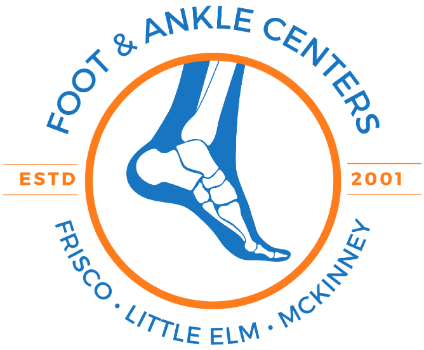Professional Podiatric Care For Sural Nerve Entrapment
Most people who suffer from sural nerve entrapment will feel various levels of pain in their lower leg, ankle, and foot. Our podiatric experts at Foot & Ankle Centers of Frisco, Little Elm, & McKinney can determine if a conservative approach or surgery is needed to effectively bring function back to your sural nerve. Our board-certified podiatrists are ready to help you find relief from any pain caused by your sural nerve entrapment.

Our Podiatrists Can Identify The Risk Factors That Caused Your Sural Nerve Entrapment
At Foot & Ankle Centers of Frisco, Little Elm, and McKinney, our podiatrists will ask about your medical history, symptoms, and lifestyle habits. There are a variety of factors that can cause your Sural Nerve Entrapment and this includes:
- Trauma- Trauma or injuries, such as fractures, sprains, strains, contusions, or direct blunt force trauma to the lower leg, ankle, or foot can cause sural nerve entrapment.
- Repetitive Stress- Repeating specific movements that place stress on the sural nerve can cause entrapment. These activities tend to be running, cycling, jumping, and other high-impact sports.
- Athletes- Athletes and active individuals tend to place extra stress on their sural nerve from both activities that involve repetitive stress to the nerve and due to a higher risk of re-injury to the areas along the sural nerve.
- Sciatic Nerve Impingement- The network of nerves in the body is complex enough that when the sciatic nerve becomes inflamed, any connecting nerves like the sural nerve will
- Scar Tissue- The development of scar tissue can form due to an injury, surgery, or other trauma to the area around the sural nerve. A build-up of this scar tissue will compress the sural nerve and lead to impingement.
- Obesity- Excess body weight will reduce circulation in the blood and put extra stress on the sural nerve.
- Diabetic and those diagnosed with Diabetes-Related Neuropathy- High blood sugar levels in the body can cause damage and compression to the sural nerve.
- Vascular Diseases- Besides diabetes and obesity, peripheral artery disease is another vascular disease that can cause nerve entrapment. This disease narrows the blood vessels and causes enough inflammation to entrap the sural nerve.
To ensure an accurate diagnosis, your podiatrist will include a physical exam and a nerve conduction test. The information gathered by your podiatrist will include your foot's range of motion, your ability to move your toes, and the strength and function of your sural nerve. Lastly, imaging tests may be used to see the severity of inflammation and damage to your sural nerve. These tests may include an X-ray, MRI, or ultrasound.

